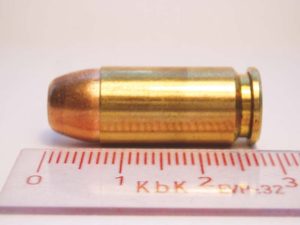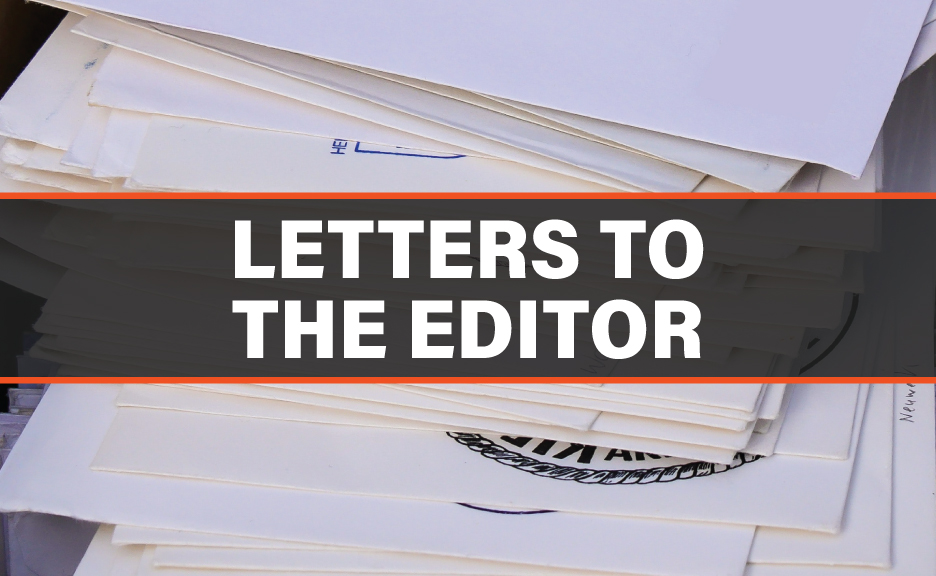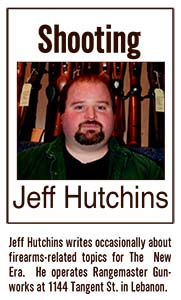.40 Short & Weak.
.40 Small & Wimpy.
I agreed with all of these terms nigh onto three decades ago, when the .40 Smith & Wesson appeared on the scene.
It propelled a 180-grain bullet out of a service pistol at a rather mundane 990 feet per second, in the high 300s in foot pounds of energy.
Not actually weak or wimpy but not anything to get excited about. The excitement was instant and immense, however, and the cartridge took off like a proverbial rocket. It seemed every police department in America was switching to the round.
Sweet Home P.D. did it; the Oregon State Police as well, and even the Linn County Sheriff’s Office bought in.
In the beginning the hype was totally unfounded, as far as I was concerned. There were already .45 ACP loads adding over 150 foot-pounds of energy to what the “new” centimeter bore was doing. Even the “lowly” 9mm Luger (which most adopters were running away from) bested the new S&W by 50 to 60 foot-pounds with its most powerful versions. So who cared about this upstart?!
I derided its value to everyone who would listen, and some who didn’t.
But I have since switched places with what seems to be the majority of gun experts. I recently heard two on TV claim that the .40 S&W is a “terrible round.”
I can’t swear to it, but I’m pretty sure one of these guys was writing when the round was introduced and loved it. What happened? Let’s discuss.
What changed my opinion was when lighter bullet loads were introduced at respectable velocities. Suddenly the .40 was rivaling the vaunted .357 Magnum, the king of self-defense handgun rounds, with energies in the 550 foot-pound range. As I’ve noted in the past, two police officers, Evan Marshall and Ed Sanow compiled an immense pile of data on real-life gun fights, the exact loads used and the results.

THE .40 S&W cartridge has provoked controversy — and a change of mind
for the author.
To condense to the essence of their findings, each LOAD (not cartridge) is given a pass/fail percentage. The best of the new, fast .40 S&W loads started producing 96 percent one-shot stops. In fact, the first five for the 135-grain Cor-Bon load were ALL one-shot stops. The king (.357) has hung at 96-97 percent for the duration, the best 9mm rounds at 91-92 percent.
So maybe there was something to this new round after all?
The cartridge’s birth was a marriage between S&W and Winchester Ammunition (separate from Winchester firearms, by the way). The FBI decided that the 10mm was the greatest police pistol cartridge of all time, through a lot of testing/research, though it seems their
conclusions came mostly from computer simulations. What the computer didn’t account for was that full-power 10mm loads are somewhat abusive to many shooters and very abusive to firearms.
The bureau issued an all-stainless steel S&W pistol to the agents but were met with much resistance. To combat the recoil issue, the manufacturers produced a 10mm “Lite/Light” round with reduced power and, most importantly, recoil. The weight was much-maligned as well, though, and the pistol was doomed to a footnote in the agency’s lore.
I just saw a TV program on weapons of the FBI and they didn’t even mention it. The Bureau also acquired Heckler & Koch (pronounced Coke) MP-5 submachine guns in the 10mm caliber, which they reportedly still use.
The folks in Springfield, Mass. decided, “If the 10mm is going to be downloaded, why don’t we shorten the case and stuff it in 9 mm-sized handguns?” They enlisted Winchester’s help and voila, the .40 Smith & Wesson was born.
Then GLOCK beat S&W to market with similar pistols. As an aside, GLOCK is also the only manufacturer that has a proven platform with the 10mm that doesn’t shoot itself to death in relatively short order unless precautions are taken by installing heavy recoil springs and buffer systems. Springfield Armory’s new XD pistol and Sig Sauer’s all-steel P220 show some promise but, as I said, the GLOCK is proven in over three decades of in-the-field use. But I digress …
So if the .40 is the perfect caliber, why are so many departments switching back to the 9 mm? Mostly because, like its father, the .40 is hard on pistols. It doesn’t hammer them to oblivion like Daddy does, but it’s no pussy cat either. Take a look at the .45 and 9 mm; there are +P loads for both. This stands for “plus pressure” hotter-than-normal loads. The 9mm even has +P+ loads. Nothing like this exists for the .40 because it is operating at the highest allowable limits already.
This power equates to recoil that is the other reason for the big switch. In a former time many departments had height, weight and even physical standards for officers that were higher than those in place today. Law enforcement officers now are much smaller, in much greater numbers, than ever before. Large-caliber handguns are usually more difficult for these people to handle and control.
The efficiency of the 9mm makes it a natural fit for people of all sizes. It is easier for a large person to shoot a small gun than a small person to shoot a large gun. So if uniformity is the goal, this is the result.
There is a notion going around that 9mm ammo has become so much better over the last few years that the gap has closed between the calibers. In truth, the gap rarely, if ever, existed in the first place. The energies I cited above were established in the mid- to late-80s and haven’t been eclipsed yet. Even before that there were excellent loads for all of these calibers that really equalized them anyway.
I hear gun “experts” cite this “fact” on TV, in magazines and on the internet all of the time. They really ought to know of what they speak before grandstanding.
That all being said, ammunition HAS gotten better over the years, or more correctly, more companies have caught up to the few leaders of the previous decades.
I will also admit that in the 9 mm’s case, there weren’t a lot of good duty loads out there. The best rounds worked extremely well on targets with no intermediate barriers, but didn’t penetrate auto glass and body work very well.
In truth, no service cartridge does this extremely efficiently, but the .357 and .40 were the best at splitting the difference. They even gave up terminal effectiveness for durability, but there were some good compromises.
That is why I was a big advocate of the .40 for police use and would choose this caliber myself if I were to “serve and protect.”
The one platform I am not a fan of the .40 in is sub-compact pistols. These little buggers squirm and bite at your hand way too much for me. If you can handle them, go for it, but keep an eye on your pistol for wear and breakage. The round beats up little guns like it beats up my hand—not an instant self-destruct but definitely accelerated wear.
I might be the greatest defender of the 9mm on the face of the earth. I love it, shoot it, even collect it and take offense at uninformed detractors, but I don’t think it’s the best answer for uniformed duty use. It’s still not that great at defeating barriers unless quite
powerful loads are used and then the advantages of lower recoil and longer service life of the pistol are largely forfeited.
It does offer a couple of more rounds in the magazine but most officers carry three clips, so I don’t see that as a big loss. On the other side of the coin, most police shootings aren’t through barriers, so maybe too much emphasis is placed on this ability?
In point of fact, it may be more of a detriment than an advantage, as over-penetration is its own hazard to innocent bystanders.
Here the 9mm gets a point as only hits count and a miss with a .45 is much bested by a perfect hit with a 9 mm. The argument goes on and on…
I believe Massad Ayoob was the one who coined the saying “let those who ride decide.” We should inform the individual officer on all of the nuances of pistols, calibers and self defense. Let them try as many different serious combinations as possible, then let them decide for themselves.
If they don’t care enough about it to put the time and effort into it, maybe they shouldn’t be paid to carry a firearm? They don’t need to be “gun buffs” just to care enough about this life-and-death decision totake it as serious as it is.
I usually carry a 9mm Luger or .45 ACP, rarely a .40 S&W. BUT, if I had to choose a carry/self-defense handgun to use exclusively for the rest of my life, it would be a GLOCK Model 23 in .40 S&W.
My home defense handgun has been another GLOCK .40 but with a 1-inch longer barrel, the Model 35, for around 20 years. It wears a bright light attached all of the time. My oldest son uses a custom GLOCK-based 9mm for anything a .22 won’t handle. My wife uses a Ruger 9mm and two different S&W 9s.
Let those who ride decide!





